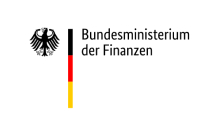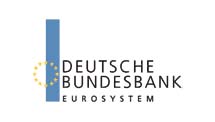Sustainable Infrastructure Investments for Institutional Investors
Module Description:
By 2040, the global population is estimated to grow by approx. 25% triggering a massive investment demand for infrastructure. Investments will be needed to maintain and modernize already existing infrastructure such as transport, social or energy infrastructure and increasingly for the build-out of new infrastructure types needed for a transformation to a low-carbon economy including renewables and energy storage.
The G20 Initiative Global Infrastructure Outlook forecasts infrastructure investment needs and gaps in both emerging and developed economies globally at approx. USD 94 trillion with a funding gap of approx.. USD 15 trillion. In particular, Asia is facing a serious infrastructure shortfall. Although the region invests heavily, keeping pace with economic and demographic changes will require significantly increased infrastructure spent and the mobilization of private capital to bridge the funding gap. In 2015,with the Asian Infrastructure Investment Bank (AIIB), a new international financial institution (IFI) was set up to help address this challenge. Next to building sustainable infrastructure and enhancing cross-border connectivity, AIIB in 2018 set out its strategy to catalyze private capital for infrastructure investment in the region.
At the same time, long term asset allocation strategies of institutional investors such as pension funds and insurance companies were subject to a lasting impact of the economic downturn over the last decade. Institutional investors are required to meet long-term commitments such as pension payouts or insurance policies. The prolonged low-yield environment and volatile stock markets have increased the urgency for higher-yielding strategies of institutional investors. With over USD 70 trillion in assets, institutional investors are increasingly looking for new types of sustainable long-term investments and have steadily increased their asset allocation in infrastructure investments such as roads, bridges, schools, renewable energy or broadband infrastructure. While investments in productive fixed assets have the potential to generate long-term, inflation-linked returns, the matching of infrastructure demand with the supply of private capital from institutional investors is subject to major challenges.
The purpose of this lecture on Sustainable Infrastructure Investments for Institutional Investors is to provide an understanding of these challenges and their possible solutions, such as the political, legal and regulatory framework for infrastructure investments by institutional investors, the legal management of the main risks of investments in large infrastructure projects including increasingly important economic, social and governance (ESG) requirements.
Learning outcomes/competence objectives:
- Understanding of the role and importance of infrastructure investment with a particular focus on major infrastructure needs in Asian emerging markets
- Navigating the policy environment for infrastructure investments (global/regional/national) and developing an understanding for regulatory drivers for institutional investment in infrastructure (why?/why now?)
- Understanding of different methods of investing for institutional investors (listed/unlisted vs direct/indirect)
- Understanding different investments structure with different sources and types of private and multilateral financing,
- Understanding how equity investors, borrowers and lenders attempt to reduce or manage risk
- Understanding of the key legal and regulatory requirements and considerations for institutional investors
- Understanding of the increasing role of sustainability risks and the legal taxonomy of Economic, Social and Governance (ESG) for institutional investors
Credit Points:
5
Lecturer(s):
Module Supervisor:
Prof. Dr. Andreas Cahn







































